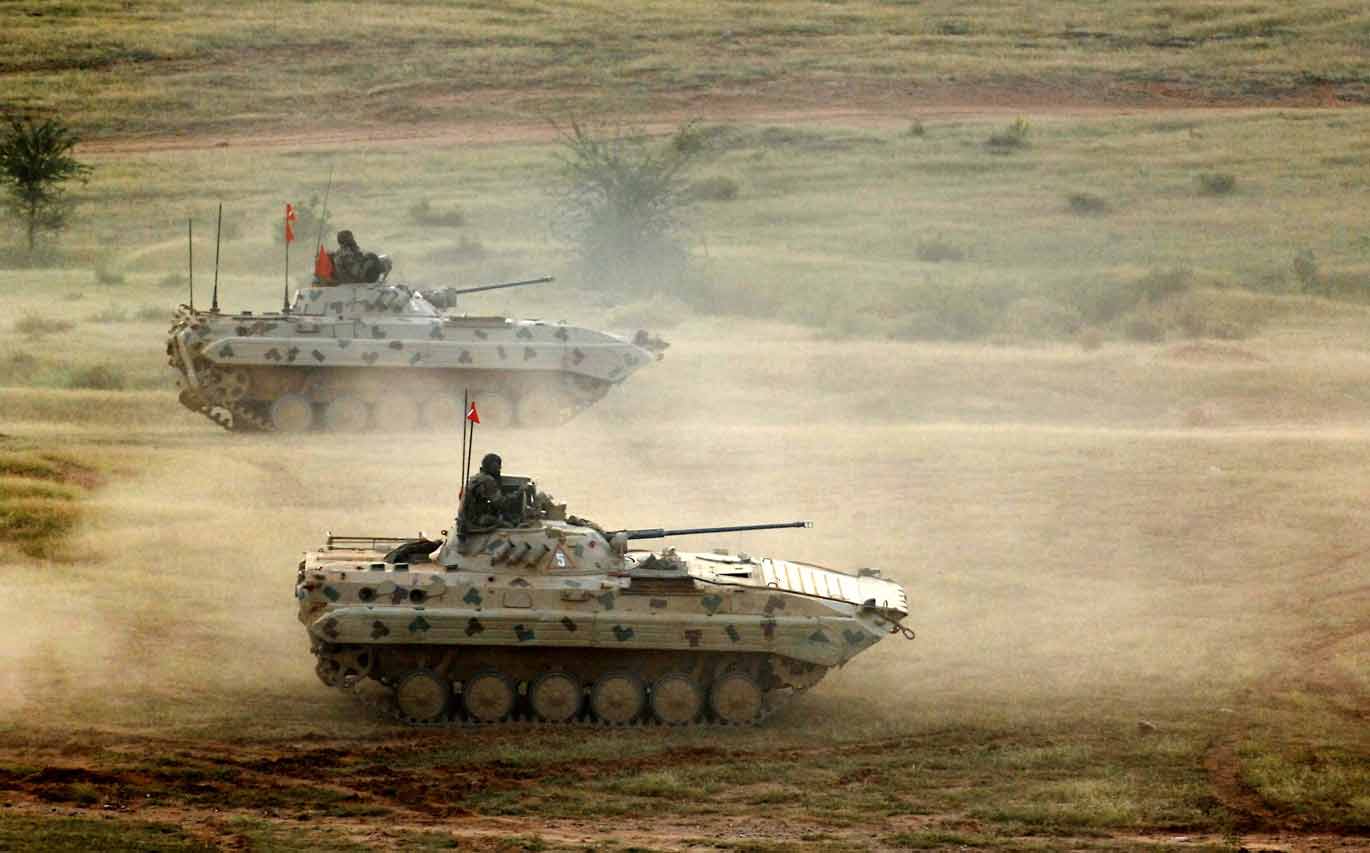India’s Futuristic Infantry Combat Vehicle trundles far into the future
Why has India's Futuristic Infantry Combat Vehicle stalled? Sarosh Bana speaks to one of the bidders for the troubled programme.
Sarosh Bana
12 March 2023

When will India's Futuristic Infantry Combat Vehicle (FICV) project finally move forward? Indianapolis-headquartered Allison Transmission, the largest manufacturer of medium- and heavy-duty fully automatic transmissions, recently announced that Larsen & Toubro (L&T), one of the Indian bidders for the FICV programme, had selected its 3040 MX propulsion solution for the FICV prototype.
But there is still no clarity on when this combat vehicle will actually be delivered. Since 2008, political indecision, bureaucratic apathy and frequent changes in procurement practices have impeded the Indian Army’s critically required FICV.
The FICV was envisaged to replace the vintage Soviet BMP-IIs that were the bulwark of the Army’s Mechanised Infantry since the 1980s and which have long outlived their utility. The ageing BMP-IIs, which the FICV will replace, are deployed in large numbers to tackle China’s cross-border transgressions but suffer from a lack of night-fighting and anti-drone capabilities.
First conceived in the 1990s as an infantry combat vehicle (ICV), codenamed “Abhay” (which is Sanskrit for ‘Fearless’), to be developed by the Ministry of Defence’s (MoD’s) Defence Research and Development Organisation, the entire FICV process was started afresh when the Army issued a Request for Information (RFI) in June 2021, its third since 2008. Domestic private sector firms Larsen & Toubro, Tata Motors, Mahindra Defence Systems and Bharat Forge responded to the RFI.
Abhay was to be a pre-technology demonstrator to develop and test technologies that would be used in the FICV, but its interminable hold-up led the MoD to jump-start Project FICV as a private-public partnership in 2009 that drew the interest of L&T, Tata and Mahindra. In 2010, an Expression of Interest was issued to these firms for producing about 2,600 FICVs, but a proposed shortlisting of two of the contending firms the following year made no headway
The Defence Acquisition Council then granted Acceptance of Necessity (AoN) to the Army last December, under the ‘Buy (Indian-IDDM)’ acquisition category for FICV Tracked. The IDDM category refers to military equipment procured from an Indian vendor that is Indigenously Designed, Developed and Manufactured with a minimum of 50% indigenous content on the cost basis of the total contract value.
Last December’s AoN didn’t specify the numbers of FICVs to be produced nor their production rate but seeks to split the numbers in a 60:40 ratio between the lowest and second-lowest commercial bids. Vendors who did not respond to the June 2021 RFI were given till 1 March to express an interest.
Specifications for India's Futurisitic Infantry Combat Vehicle
L&T has been a constant bidder at all stages throughout the FICV programme. Jayant Patil, a member of the company’s executive council, and advisor (Defence & Smart Technologies) to L&T’s CEO and managing director says RFP aspirants will need to evolve their design of FICV indigenously and own the system-level design intellectual property (IP) to be able to bid for the programme.
“It is expected that the technical bid evaluation will be followed by building a prototype FICV in three years, that will be subject to field evaluation trials, with commercial bids to be submitted prior to the trials,” he says.
Arun Ramchandani, executive vice president and head, of L&T Defence, claims his company’s consultative interactions with Army HQ since 2008 culminated in Project FICV being accorded a funding ratio of 80:20 MoD and industry.
The army’s RFI requires the vehicle to be modular and lend itself to future upgrades through simple modifications. It also needs to be amphibious, with laser warning and active protection systems, and its weapon turret “preferably unmanned.”
The armament suite is to include a 30 mm automatic cannon, fire-and-forget top-attack ATGMs, and a 12.7 mm stabilised RCWS (remote-controlled weapon station). The FICV should moreover have a 30hp/tonne power-to-weight ratio and combat load of 2.5 tonnes and be manned by 11 personnel.
Ramchandani remarks that L&T’s maturity in system design and development of a wide range of weapons systems got it through the Army’s Technical Evaluation Committee with an in-house designed FICV fighting compartment prototype, without engine transmission and tracks, for evaluation. “This was in contrast to the other participants, who offered solutions based on existing mature ICV designs after incorporating necessary changes,” he adds
Should its bid be successful, L&T will build the FICV at its Armoured Systems Complex at Hazira, in Gujarat state. The platform-level design will be L&T’s own in-house effort, with niche equipment and sub-system-level partners to be identified for supply, co-development, co-production, and indigenisation.
Allison Defense Programs vice president Dana Pittard said his company will manage engineering design, development, fabrication, testing and demonstration of the 3040 MX for the prototype vehicles through 2024, adding that the Indian Army intended to procure 1,750 FICVs over the next two decades.
Patil points out, however, that Allison’s announcement pertained to a specific powerpack that L&T was awarded for a development contract by the OFB’s Armoured Vehicles Nigam Limited (AVNL) for the prototype FICV. He says the powerpack configuration will be finalised post-issuance of the RFP
He says contract issuance will take a minimum of seven years, and supplies may start at least a year and a half thereafter, “given the need to develop an extensive supply chain by the company that wins the contract.
* SAROSH BANA is the Executive Editor of Business India in Mumbai.